The Whole World Was Watching
Remember when the world turned its attention to Burma and promised to no longer ignore the suffering of the people there? Truthdig contributor Sarah Stillman sat down with Burmese democracy organizer Maung Maung to check in on the Saffron Revolution and the brave men and women who continue to resist oppression, whether anyone is watching or not.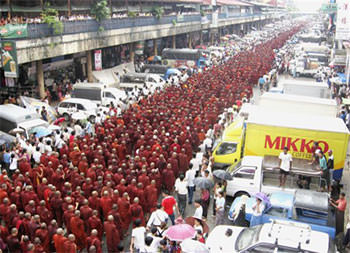
When the youths of Burma chanted “The whole world is watching!” through clouds of tear gas last September, it was — for once — an understatement. Cell phone footage of the junta’s violent crackdown made the rounds from Beijing to St. Petersburg. Rebellious monks graced the front page of The New York Times (twice!), and global leaders cheered them on: Desmond Tutu, Laura Bush, the Dalai Lama, Gordon Brown. Everywhere you turned — from late-night TV talk shows to political newsweeklies — the Saffron Revolution was hot.
But then came winter, with new battlegrounds de jour: Kenya, Gaza, Pakistan. In October, CNN’s Anderson Cooper may have pledged his journalistic fidelity to Burma’s 100,000-odd protesters — “We’ll continue to cover this story, no matter how long it takes” — but a mere three months later, while hundreds of monks still languished in Rangoon’s infamous Insein Prison and others continued to flee down the Moei River in inner tubes at night, Cooper had moved on to San Francisco, covering a death-by-tiger at the city zoo.
If only Burma’s junta had the short attention span of U.S. media moguls. To the contrary, the military regime ranks among the world’s most durable autocracies, with a 46-year-long rap sheet of endemic torture, forced labor and extrajudicial executions. If it takes endurance to transform an oil-rich nation of beaches and gemstones into one of the world’s most impoverished states, the Burmese junta has it in spades — along with an uncanny knack for natural-resource trafficking and diplomatic subterfuge. In the 1990s, Burma sold more heroin than any other country on the planet. Elbowed out of the market by Afghanistan, the regime now deals in more hoity-toity cargo — rubies, teak and assorted hydrocarbons — the last of which has been skillfully doled out by Gen. Than Shwe in exchange for more than $2 billion in military equipment from China and India.
But Burma’s democracy movement also has its masterminds. Allow me to introduce Maung Maung. In 1988, the Burmese trade unionist survived the front lines of a violent rally suppression that killed at least 3,000 of his peers. Two decades later, he remains an agitator-in-exile, helping to coordinate last fall’s nonviolent demos from the Thai frontier town of Mae Sot. As secretary-general of the National Council of the Union of Burma, an umbrella group for exiled politicians and ethnic leaders, Maung Maung shuttles revolutionary spores across the border like the Johnny Appleseed of Burmese democracy — everything from educational materials to digital cameras.
I recently caught up with Maung Maung over coffee in Washington, D.C. He’d flown some 17,000 miles to Capitol Hill for another crusade of sorts, testifying before the Congressional Human Rights Caucus on the need for toothier U.S. sanctions against the junta. At present, he says, corporations like Chevron can slip through various loopholes in U.S. protocol, funneling millions into — and out of — Burma’s natural gas pipelines. American consumers, too, play a role in funding the regime, thanks to our taste for Burmese gemstones. In 2006 alone, the state-controlled Myanmar Gems Enterprise lapped up almost $300 million from the global ruby and jade trade, a revenue increase of 45 percent from the previous year.
What follows are Maung Maung’s observations from inside the Saffron Revolution — about the regime’s penchant for trafficking in dirty stones and child soldiers; about the democracy movement’s love affair with Gmail and satellite phones; and, most of all, about the future prospects for a regime-crippled nation with so much to gain from revolt.
Sarah Stillman: Back in September, the whole world had its eyes on Burma. When the junta began clubbing students and shooting monks, the international community reacted with collective outrage and calls to action. But as we enter 2008, that flurry of attention has subsided … although, of course, the torture and arbitrary arrests have not. What do you think will happen next within Burma? Do you anticipate a new wave of protests, or is the opposition within Burma in a period of consolidation and reassessment?
Maung Maung: There have been countless activities taking place that haven’t made it into the international news — much of it is happening secretly. Our main focus at the moment is getting the endangered monks and activists into safe homes, moving the resistance leaders out of harm’s way. Many of them are still in situations where they could be arrested at any moment by the regime.
There are also brave groups of young people who are getting together at roadside cafes to tear up copies of The New Light of Myanmar, the regime’s newspaper. They rip it up, throw it on the ground and stomp on it, saying, “We don’t believe this propaganda anymore!” They also held a small protest on Nov. 26, with a group of about 300 people.
So, yes, there is action — quite a lot of action, in fact — but there is not much reporting by the international media. Mostly silence.
Stillman: It’s interesting to hear about these roadside gatherings — I guess young people have always played an important part in telling the regime it has no clothes. … Can you talk more about the role that students have played in the movement, from its origins until today?
Maung Maung: Well, students have always been more mobile and flexible in their activism — they don’t have to fear losing their jobs or being unable to feed their families. That’s one reason they’ve always played such a large role.
The last wave of protests in Burma — the movement that I came out of — took place more than two decades ago now. Young people who were born after that ’88 uprising weren’t tuned in to the injustices of the regime, at least not in the same ways as those of us who lived through it. And so the younger people often fell for the propaganda of the regime more easily.
But last August and September, the protests let them see with their own eyes what this regime is really about. And so a new breed of activists is rising up and radicalizing. It’s a very hopeful sign.
The regime tried hard to prevent this; they opened karaoke bars and restaurants and things like that, trying to divert young people away from politics and claimed that “democratization” was finally happening.
But they couldn’t cover up all the hardships. And now, after the recent protests, the younger generation is finally asking, “Hmm … what’s really going on here?” So, it’s a regime that we have to thank for showing a new generation of students, “Hey, this is how bad we really are.” We should thank them for their own stupidity.
Stillman: Let’s talk about the shifts between the 1988 protests and the current unrest. Clearly, one key change has been the rise of new forms of media — cell phones, digital cameras, blogging. … What kind of impact have these technologies had on dissident culture in Burma? What are the other similarities and differences between the recent protests and ’88?
Maung Maung: In ’88, the movement was very different: There were more protesters from all parts of the country and all walks of life. It was much more diverse, in terms of participation. This time, the protests were more confined to the capital city of Rangoon, and monks played a more prominent role than ever before.
But, having said that, there is also the media difference you mention between now and ’88. When ’88 took place, very few people knew about it — the news slowly trickled out as we started telling people, and then more people, and then more people all around the world. This time, you’re right, the graphic images could come out right away with the help of new technologies. The activists inside the country have started to use the available technologies to their advantage — the Internet, the cell phone, the satellite phone. We’ve trained more than 200 activists to transmit images from the front lines of the demonstrations, using satellite phones and digital cameras.
Even more incredible, there were live chats coming from inside the country. There are about 50 Internet cafes all over Burma, and young people were able to log into GTalk and say to the rest of the world, “Here’s what is happening on this corner; here’s what is happening on that corner.” Quite a lot of young activists have been trained in how to use Gmail. It is extremely helpful to the movement.Stillman: But how much was the regime able to crack down on this activity in September? I read that they tried to cut off cell phone reception and Internet connectivity. …
Maung Maung: Well, if you look at the number of bloody images from the protests, you can see that the activists found their way around the regime. In the beginning, the junta didn’t know what the hell was happening. Young people were running around with their hand-held mobile phones and passing on photographs to people outside the country. They were two steps ahead.
The regime controlled the gateway to the Internet — it was really more of an Intra-net than an Internet — and they tried to shut it down, but the young people were breaking out for themselves, using their brains to get around the regime’s barriers.
Stillman: I’d like to get your take on some U.S. legislative issues. Last month, Congress passed legislation authored by Rep. Tom Lantos that would cut off tax deductions for business activities in Burma by U.S. companies, such as Chevron. The bill will also block the current laundering of Burmese gemstones, particularly rubies, through third countries before they are sold here. If these new measures get signed by President Bush and become law, how big a blow will they be to the military regime?
Maung Maung: Well, the regime wants the world to think that Burma is a free and open economy, but if you scrutinize it, you’ll see that there are only two or three real monopolies controlling everything. The first is the UMEH. [Union of Myanmar Economic Holdings], which is owned by the military. The second is owned by a business tycoon named Tay Za, and he’s the son-in-law of the regime’s top general. The third is a guy named Steven Law [who is alleged to have links to Burma’s drug trade].
If you want to do mining for gems or jade in Burma, you have to buy permission from the military’s own holdings company, so your very first investment in the project, even before you start digging, goes directly to the government. You also have to give a certain percentage of your profits to the government once you sell the gems, along with an export tax. So to get a single ruby into the global marketplace, you have to feed money to the government at least three times.
That’s why it’s so important that Burma’s gem and jade business be shut down. A long time ago, before I became an activist, I was a gemologist. I worked for the Burmese government for 12 years, so I know the business well, and I know that Burma has the best gems in the world. In order to get around the sanctions that were placed on Burmese gems [in 2003], they are bought by the Thai traders, recut in Thailand, and resold as “Thai” exports.
But any gemologist can look at a collector’s piece and see immediately that it’s come from Burma. You can’t lie about what we call “internal inclusions,” which are always unique to the site of mining: air bubbles, gas bubbles, rubies within rubies. A gem that is mined in, say, Dupont Circle, would be very different from a gem that is mined in Rockville. So you can identify the origins of a gem, if you bother to try.
Although the Thai exporters will continue to claim that their rubies are coming from Thailand, most of the top-quality gemstones are still coming from Burma, and we need to close up these legal loopholes. I think this new piece of legislation is just the beginning.
Stillman: China has significant influence with the Burmese military regime, given its extensive trade and military ties to the junta. And China has blocked meaningful actions by the U.N. Security Council on Burma. What would you like to see done to pressure China on Burma? Some have urged a boycott of the Olympic Games this summer. ….
Maung Maung: We’re not calling for a boycott of the Olympics. First of all, the Olympics are time-bound. They come and they go in 2008. Second of all, the athletes have spent their whole lives preparing for this event, and we want to respect that.
Having said that, what we need is to inform China that a stable Burma is good for everybody. We are not looking to kick up China’s investments in Burma; we’re looking at a system that would allow democratic participation for everybody in Burma’s politics and economics, and, therefore, greater stability.
Stillman: And what about India? It, too, could have an impact on the regime, and while China is repressive in its own right, India is a democracy that ought to play a constructive role but hasn’t — due to its energy interests, it seems.
Maung Maung: Being a large democracy, India is a very bulky animal to move around — the bureaucracy is so big that it’s hard to tell what’s going on. They were supportive of the pro-democracy movement earlier, but we don’t know what shifts have taken place. It seems like energy and gas availability from Burma has made India more willing to get comfortable with the regime.
Once again, we need to emphasize: Democracy in Burma is the best way to ensure that the raw energy that Indian needs comes from a stable and reliable source.
Stillman: How effective do you think the various targeted sanctions by the U.S. are on the regime’s top leaders: the ban on travel visas, restrictions on bank accounts and so on?
Maung Maung: It’s making the regime go crazy. I must point out that, except from the U.S., there have been no sanctions from anybody. Some people say that sanctions haven’t worked, but I want to challenge them: Excuse me, but can you tell me who has even tried to place forceful sanctions on Burma? Europeans, mostly, have not. European countries have visa bans, but nothing to strike at the heart of the economic issues. It’s only the United States that has done anything substantive. We have to thank the U.S. customs people and other authorities for following up on [presidential] executive orders.
As small as they are, the financial sanctions are making a huge economic impact. The man I mentioned earlier — Tay Za — owned an airline called Air Bagan. It flew to Singapore and Thailand, and the military generals were very proud of it. But then the financial scrutiny hit Tay Za, and the banks in Singapore refused to handle his money. The French, too, stopped servicing his planes, and Tay Za eventually had to give up the enterprise.
The business community in Singapore is scrutinizing Burmese accounts more harshly than ever before. There have been complaints from Burmese merchants about it. We know it’s making a big difference.Stillman: The U.N. has reported on “grave child rights violations,” including the forced recruiting of children into the army. Apparently there’s pressure to accelerate army recruitment rates, and brokers are said to be paid $30 and a bag of rice for each child soldier recruited. The U.N. also found that some children who desert from the Burmese military are given prison terms of up to five years. What is the state of the military. … Is the regime so desperate that it has to recruit kids?
Maung Maung: Yes, the regime is having serious problems recruiting. The military used to be a respected entity, but this is no longer true. Although the top generals are filthy rich, many of their soldiers face great economic hardships. They don’t even have basic footwear — many of them go around in sandals or barefoot. It’s just not impressive! When a soldier doesn’t have any shoes, it not only makes it hard to fight, but it also shakes his faith in his superiors.
We have a database of how many individuals are deserting the military, and it shows that more and more men at the senior levels of the military are defecting. This is due mostly to the hardships that their families face. It’s a sad fact, but many of the soldiers’ wives and daughters have become prostitutes to cope with the poverty. Reasons like this explain why the military is having a hard time recruiting.
And so what have they done? The regime is forcibly taking children, especially high school kids hanging out at the theater or wherever. The army truck pulls up and the kids are forced into the back of the truck and taken to the police station, where they are left to sleep overnight. The next morning, the sergeant shows up and tells them that they’ve committed a crime and that the only way to avoid jail is to join the military.
Stillman: How would you describe the role of the trade union movement in the Burmese opposition? You’re a union leader, as are many of the key people who play pivotal roles in charting the next steps for this struggle. How did labor people come to play such a vital role?
Maung Maung: Well, I wouldn’t say we’re necessarily prominent. But the real key is that the trade unionists are the only unit of activists inside Burma who have unique experience with international organizations. We know exactly how to link up with trade union movements around the world to get basic training materials, and also to get references on the techniques used by other countries in other struggles in history.
We also have people who are well trained in organizing skills, unlike most of the movement’s student activists. I can ask any union person to come and offer training to our activists for two weeks, and they’ll come — we get tremendous help from the ILO [International Labor Organization], the ITUC [International Trade Union Confederation,] the SEIU [Service Employees International Union] and other groups. The ILO even has an office in Rangoon, working on international monitoring issues and providing protection for us. This isn’t true with the students or political organizations, who have a big handicap on the international front. They often lack basic organizing skills.
Stillman: You mention learning from other countries. When the street demonstrations were going on, Bishop Tutu of South Africa strongly backed the monks and other protesters, saying, “It is so like the rolling mass actions that eventually toppled apartheid.” Certainly there are many differences, but do you see parallels from the success of the anti-apartheid movement?
Maung Maung: Well, different countries, different struggles. I’d say that the overall similarity is that the international effort must be coordinated. We need a wide array of governments to support the United Nation’s initiatives in a coordinated way. The U.S. is doing it, and the UK is, too. France is starting to wake up, and Italy.
But we’re been having big problems with the Germans, who’ve been a pain in the neck. They want to have their own approach. We need unity. Most countries are slowly moving towards working together, with the U.N. at the helm. Even China is starting to think like that. Coordination, like in South Africa, is the most important thing.
Stillman: What do you think is the most constructive role that American advocates can play in the pro-democracy struggle? What forms of action or protest would be most helpful?
Maung Maung: There has been a huge amount of moral support from American politicians, but the U.S. government hasn’t fully delivered. Sure, Congress has done a lot, and there is even support from Laura Bush, but we have huge problems with logistics and implementation.
What it really comes down to is money: We need simple things like bicycles and satellite phones. People may laugh, but the movement really needs bicycles. In Burma, fuel is very expensive, so bicycles allow organizers to go around and speak with individuals in different areas.
We also need money for video cameras, digital cameras and cell phones — these things are transforming our movement. It’s by bringing the eyes of the world back to the brutality of the regime that we can win out.
Your support matters…Independent journalism is under threat and overshadowed by heavily funded mainstream media.
You can help level the playing field. Become a member.
Your tax-deductible contribution keeps us digging beneath the headlines to give you thought-provoking, investigative reporting and analysis that unearths what's really happening- without compromise.
Give today to support our courageous, independent journalists.
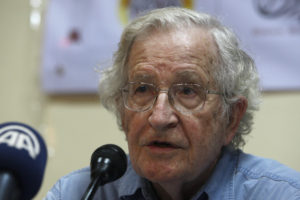
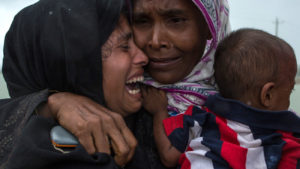
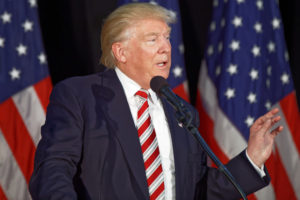
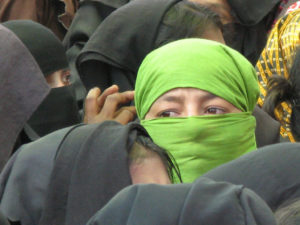
You need to be a supporter to comment.
There are currently no responses to this article.
Be the first to respond.